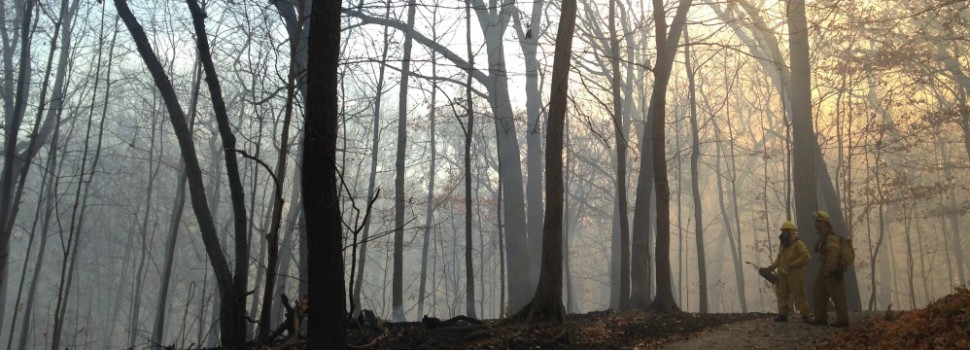Here at Friends of the Forest Preserves, we’re a strong believer in prescribed burns. They protect our prairies and woodlands from invasive species, nurture our native ecosystems, and prevent dangerous wildfires. Fall and early winter are the ideal times for prescribed burns.
Why Fire?
While it might seem counter-intuitive, fire is necessary for many ecosystems to remain healthy. Here in the Chicagoland region, our prairies, woodlands, and wetlands evolved with almost annual fires. They depend on fire to help clear out invasive species and allow more sunlight to reach shorter plants near the ground. Some plants even require fire in order for their seeds to germinate. Fires deposit nutrients into the soil, promoting vigorous plant growth. Fire also stops the buildup of flammable leaves and dead trees. If flammable materials aren’t burned quickly, they can suffocate native plants and accumulate to the point of permitting damaging wildfires.
Wildfires v. Prescribed Burns
Wildfires are natural occurrences where a fire breaks out, usually by a lightning strike in a natural area that is in drought or when people are careless with burning materials. However, here in the Midwest, lightning-started wildfires are rare, and instead wildfires are usually the result of arson. Specially-trained firefighters work to control and put out wildfires, because the path of the fire can endanger people and their homes. The main danger from wildfires in the Midwest is the smoke obstructing views on roads.
Prescribed burns are different than wildfires because they are carefully planned and aren’t random acts of nature or negligence by people. Burn specialists manage prescribed burns by first creating a burn plan. Burn plans consider the ecology of each site and the best times of year and conditions under which a prescribed burn in beneficial. Burn plans help wildlife by only burning portions of a site at a time so most animals can seek refuge. They also consider wind direction, temperature, humidity, and recent weather before the burn plan can be implemented. If any detail is off, the burn is postponed. Any fire can be dangerous, but with the right amount of planning and experience, prescribed burns will continue to benefit Cook County’s forest preserves and the people who appreciate them.
Learn More
If you’re interested in learning more or want to know how you can play with fire (in a controlled setting with training, permits, and supervision), click on these resources!
Controlled Burns: Our Most Efficient and Economical Land Management Tool (Lake County Forest Preserve District)
Five Things You (probably) Didn’t Know about Prescribed Burns (Forest Preserve District of Cook County)
Maintaining Fire’s Natural Role (The Nature Conservancy)
Midwest Ecological Prescription Burn Crew Member Training Manual (Chicago Wilderness)
Prescribed Burning: A Vital Tool in Restoration (Forest Preserve District of Will County)
Fire & Aviation Management (U.S. Forest Service)

